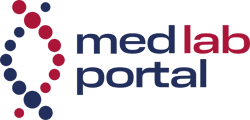Anesthesiologists call for crisis-proof structures for emergency and intensive care medicine
In view of the worsening security situation in Europe, the German Society of Anaesthesiology and Intensive Care Medicine (DGAI) and the Professional Association of German Anaesthesiologists (BDA) have presented comprehensive measures for crisis-proof emergency and intensive care in Germany. Recent events ã Russian drones in Polish airspace, the massive power outage in Berlin and the nationwide warning exercises ã have made it clear how vulnerable the critical infrastructure is. Against this background, both associations point to the key role of anesthesiology, which, with more than 28,000 specialists in Germany, forms the foundation of surgical care, intensive care medicine and emergency medicine.

The pandemic has shown that existing structures do not meet the requirements of new crisis scenarios, including cases of war. Even in everyday hospital life, the personnel and material capacities are largely exhausted. In order to ensure care in an emergency, the DGAI and BDA presented a package of measures with five core demands. This includes the establishment of a digital control center for the nationwide real-time control of intensive care and normal wards as well as the technical development of the so-called cloverleaf system, which enables coordinated patient transfers in the event of a crisis, even nationwide. Equally necessary is a mandatory expansion of telemedicine to optimize resources, binding emergency plans with defined reserve capacities including simulation training and material stocks, and the firm integration of anesthesiology into all future legislative projects for crisis prevention.
Representatives of the professional societies emphasized that there is no knowledge problem, but an implementation deficit. The required structures would have to be established before future crises occur in order to be able to reliably supply the population.
Editor: X-Press Journalistenbû¥ro GbR
Gender Notice. The personal designations used in this text always refer equally to female, male and diverse persons. Double/triple naming and gendered designations are used for better readability. ected.




